Composition
active ingredient: 1 tablet contains 0.3 mg, 0.4 mg or 0.5 mg of nitroglycerin;
auxiliary substances : lactose monohydrate, potato starch; sugar is spherical; crospovidone; magnesium stearate.
Dosage form
Tablets sublingual.
Basic physical and chemical properties:
Tablets are white or white with a yellowish tint of color, with a flat, possibly rough surface.
Pharmacological group
Vasodilators used in cardiology . Organic nitrates. ATC code C01D A02.
Pharmacological properties
Pharmacodynamics.
The active substance of Nitromax is nitroglycerin.
Nitroglycerin acts directly on the smooth muscles of predominantly venous and arterial vessels through the nitrate receptor located in the smooth muscle shell of the vessel wall. Nitroglycerin in smooth muscles is enzymatically converted to form nitric oxide (N0), which stimulates the activity of guanylate cyclase. It is responsible for the formation of cyclic guanosine-3’5′-monophosphate (cGMP), which is a mediator of relaxation. It affects the processes of central regulation of vascular tone and the activity of the heart. Promotes the release of catecholamines in the brain and heart, which leads to a central depression of sympathetic and vasomotor tonus, an indirect sympathomimetic effect on the myocardium, changes in the conformation of the troponin-tropomyosin complex. The nature and intensity of the action of nitroglycerin on the heart and peripheral vessels depend on the interaction of central and peripheral processes. The suppression of vasoconstrictor reflexes on coronary vessels is the result of central suppression of pain impulses, contributes to the relief of pain episodes with angina pectoris. The antianginal effect of nitroglycerin is due to the normalizing effect on the exchange of electrolytes and myocardial energy, namely: the key indicators of the respiratory chain – the ratio of oxidized and reduced forms of nicotinamide coenzymes, the activity of NAD-dependent dehydrogenases. Affects the activity of the heart and hemodynamics. Under the influence of nitroglycerin, retrograde blood flow increases due to the expansion and increase in the number of functioning collaterals. Indirect sympathomimetic action, as well as cumulation of cAMP in the myocardium, lead to an increase in its contractility. In addition, nitric oxide effectively suppresses both aggregation and adhesion of platelets. Reduction of peripheral resistance and decrease in venous return – effects associated with S3-relaxation of smooth muscle vessels, a decrease in pre- and postnagruzku on the heart. The expansion of veins leads to a decrease in the amount of blood flowing to the heart, a decrease in preload, and the expansion of the arteries reduces the overall peripheral resistance and decreases the afterload, which ultimately manifests itself in facilitating the work of the heart and improving the coronary circulation.
There is a redistribution of blood circulation in the myocardium in favor of a focus of ischemia, ionotropic myocardial function is enhanced. The end-diastolic pressure in the left ventricle and the size of the heart decrease, and it improves the blood supply to the subendocardial region of the myocardium that is most vulnerable to ischemia. The weakening of peripheral venous and arterial resistance and the pressure of filling the heart with blood helps reduce the energy expenditure of the left ventricle and the need for myocardium in oxygen. Pressure in the pulmonary capillaries is reduced, which leads to the appointment of nitroglycerin in myocardial infarction with pulmonary edema, as well as in heart failure. With ischemic hypokinesia of certain parts of the myocardium, its contractility is restored. Meningeal vessels dilate, the vessels of the internal organs narrow, the pressure in the pulmonary artery system decreases due to vasodilation and the systemic effect of nitroglycerin. Nitroglycerin relaxes the smooth muscles of the bronchi, bile ducts, digestive tract and urinary tract. In the experimental study, there was no teratogenic or toxic effect on the embryo.
Pharmacokinetics.
With sublingual application, the effect develops after 1-5 minutes, lasting from 8-15 to 30 minutes.
Nitroglycerin, taken sublingually, is absorbed by the mucosa and enters mainly into the systemic circulation. Absorbed 60-75% of the dose. After 2-4 minutes after taking the maximum concentration in blood plasma is reached – 2.3 μg / l, after 8 minutes – it decreases by 50% and after 20 minutes nitroglycerin is almost not detected in the blood. Rapidly metabolized in the liver. Nitro esters of polyhydric alcohols are rapidly exposed to denitration. Denitration metabolites, for example 1,2 and 3,4-dinitrate, are weaker and have a longer half-life compared to nitroglycerin. The half-life of nitroglycerin is almost 30 minutes. Cleavage of nitro groups occurs in sequence both by the formation of inorganic nitrites, and with the formation of nitrates. From the organic part of the molecule of nitroesters, alcohols, aldehydes and organic acids are formed. After 4:00 after application of the drug, nitroesters (the starting product) are almost not determined. It is actively metabolized in the liver, kidneys and blood. Nitro esters are split in two ways: by glutathione-reductase reductase, is localized mainly in the soluble fraction of hepatocytes, and with an enzyme that does not require reduced glutathione. The drug is metabolized primarily in the arterio-venous vascular bed, diffuses into smooth muscle cells, where it is converted to nitric oxide. A small part of the drug, mainly under the influence of glutathione-S-reductase, is metabolized in the liver to di-, mononitrate and glycerol. When ingested, most of the drug is metabolized in the liver (the effect of the first passage). A significant part of dinitrate and mononitrate forms conjugates with glucuronic acid. Excretion of metabolites of nitroglycerin occurs mainly by the kidneys, some metabolites are excreted through the lungs with exhaled air. The total clearance of nitroglycerin is 25-30 liters.

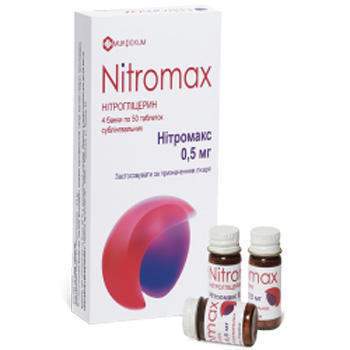
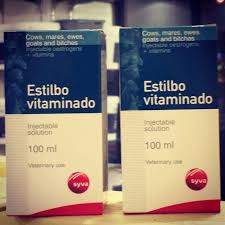
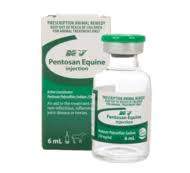


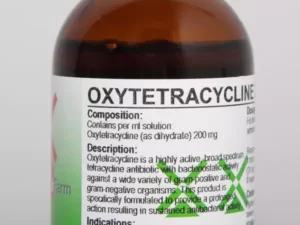
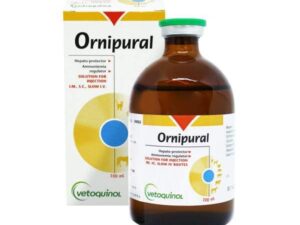
Reviews
There are no reviews yet.